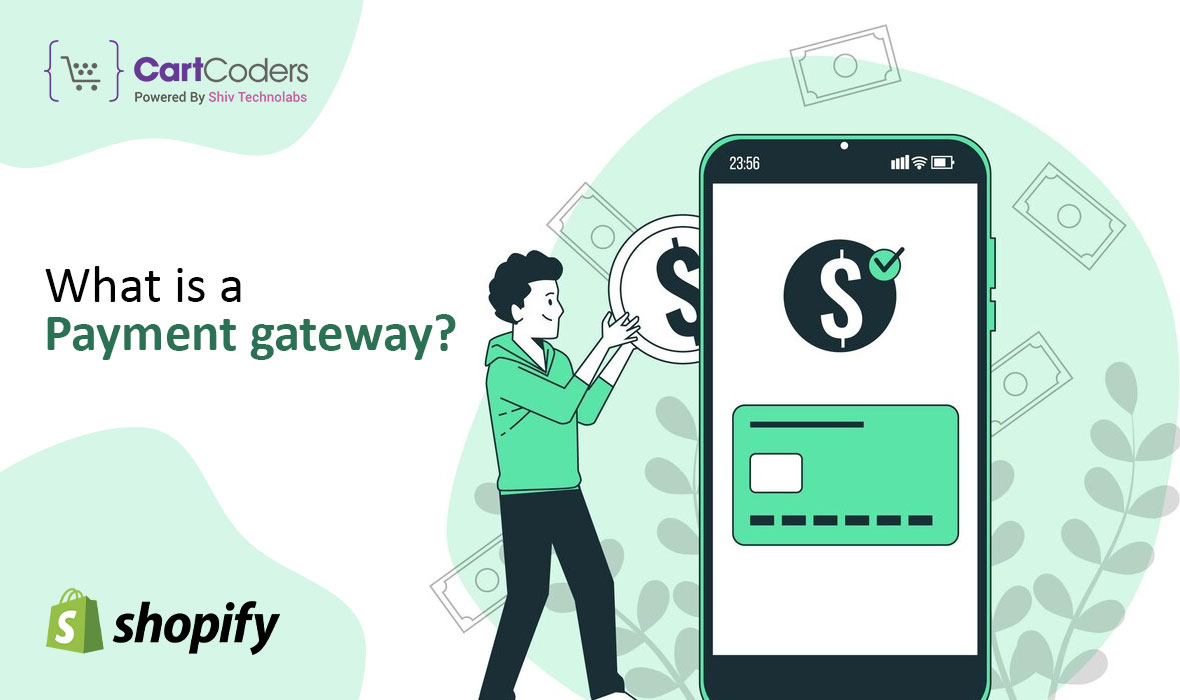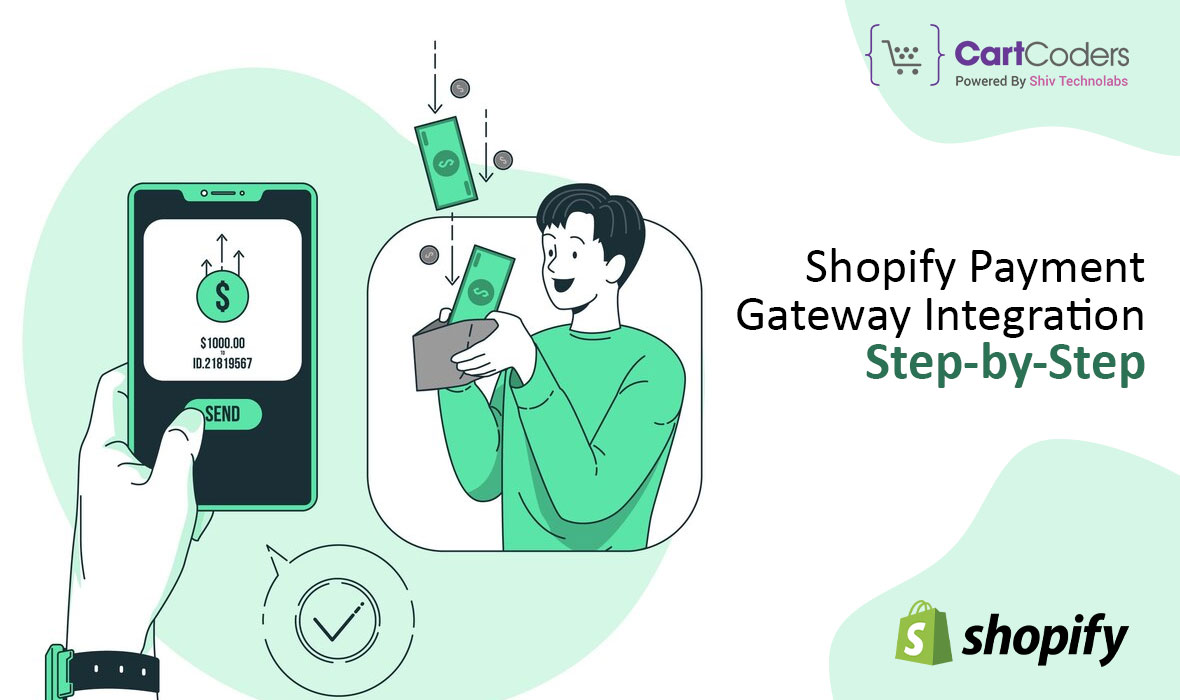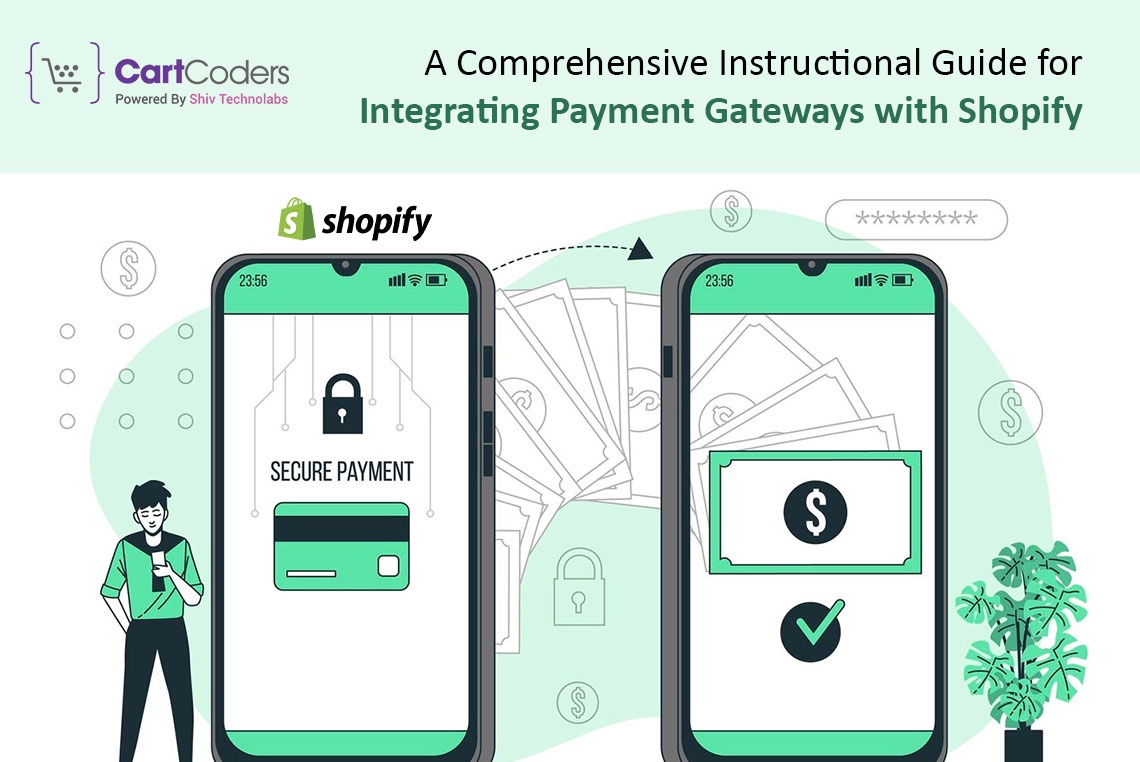A reliable and secure payment gateway is crucial in today's online economy. With Shopify, you can take payments from a broad range of sources without effort.
Let's go further into the different Shopify payment gateway development options to see how they stack up regarding integration, security, improving the checkout experience, and future developments. You may choose a reliable payment processor for use with your Shopify site.
What is a Payment gateway?

Payment gateways are used to safely transfer money from clients to online retailers. A customer's financial information is encrypted before being delivered to their chosen banking institution when they transact from your Shopify store. In this paper, we'll look at the merchant account, the payment processor, and the secure server architecture as the three pillars of a payment gateway.
Sensitive customer data is better protected when payment gateways are PCI DSS compliant. Your payment processor should be PCI compliant; therefore, if they aren't, you should look elsewhere.
Shopify payment gateway integration: step-by-step

Shopify stores can only accept payments from customers with a gateway integration. So, let’s examine the general picture while omitting the specifics of integrating a payment gateway.
1. Finding a Trustworthy Online Payment Method
You will need to select a reliable payment gateway solution to begin accepting payments on your Shopify store. Evaluate the overall cost, the variety of payment methods, the number of countries covered, and any guarantees about your data's safety. Read up on the most popular Shopify payment add-ons in the preceding sections for more information.
2. Opening a Bank Account for Business Purposes
When you've decided on a payment gateway, the following step is to open a merchant account. You may use the account to make deposits, pay bills, and receive paychecks.
Setting up your merchant account is as easy as following the offered steps by your chosen payment gateway for Shopify. You'll need to provide some potentially sensitive financial or company information right now.
3. Shopify payment gateway setup
Establishing your Shopify payment gateway follows the activation of your merchant account. For the reasons that:
- Log in to your Shopify admin dashboard.
- You may adjust your payment preferences by clicking "Settings" and then "Payment Providers."
- You may choose a gateway by selecting the "Choose third-party provider" or "Alternative payment method" button on the "Accept Payments" tab.
- Choose a financial institution or payment processor from the options offered.
- If asked to do so by your payment processor, provide the API keys or account IDs.
- If you'd like to change how you're charged, choose "Save."
4. Cash Flow Proving Documentation
Integrating Shopify payment gateway integration services necessitates further testing of the payment process to guarantee proper operation. Before launching for real, you can test Shopify's payment processing in a sandbox setting. These are the guidelines on how to play a monetary game:
- Turn on testing mode in the Shopify backend or at the chosen payment processor.
- Test out Shopify's checkout with a fake purchase.
- Your gateway link requires a payment method specification.
- Try out different payment options with the fictitious information given.
- Shopify's backend makes it possible to check the order's progress and ensure the money was successfully processed.
5. Troubleshooting integration concerns
A few potential snags might arise throughout the payment gateway setup process. Here are some suggestions for improving existing integration and avoiding future difficulties.
- If you need extra information, check into the resources given by your selected payment processor. Tutorials and tips for integrating Shopify are readily available.
- Check the Shopify control panel for any alerts or problems. The problem may be described or potential remedies offered in these alerts.
- Shopify's support staff and any payment gateway provider you choose are available to help you get your store up and running if you run into any trouble. They may aid in diagnosing integration issues and provide specific suggestions for fixing them.
Conclusion
The merchant's ability to accept payments is crucial to the success of their Shopify site. In this in-depth tutorial, you'll learn everything there is to know about payment gateways, from their basic building blocks to shared security concerns to optimization techniques and future trends. Customers' financial data can be safeguarded, and a pleasant shopping experience can be provided if you use the data at your disposal.
Several payment gateways are compatible with Shopify, which is good news for your online store. Improving the customer's shopping experience and thoroughly investigating possible payment processors are crucial to an online store's long-term success.


No comments yet